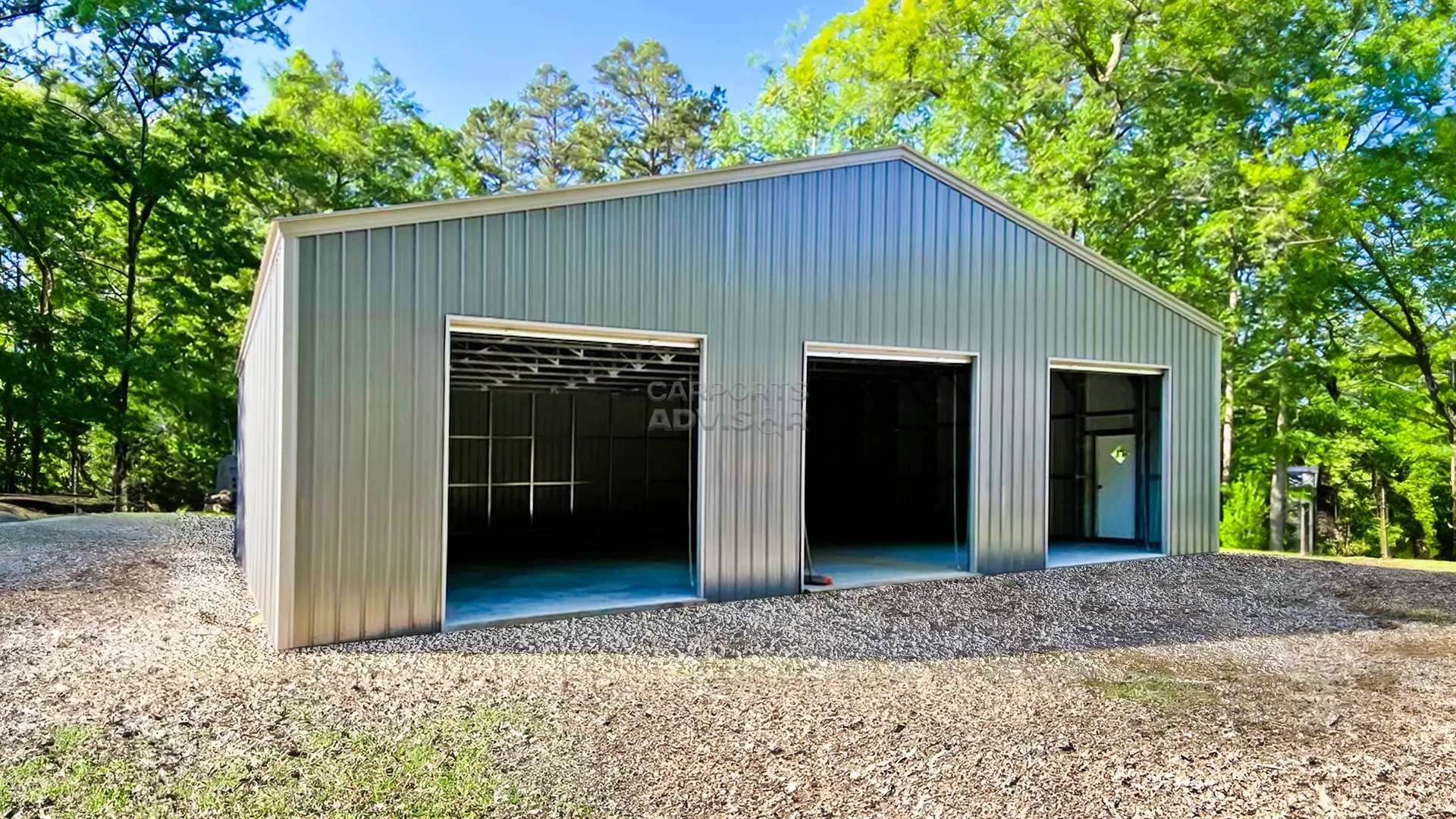The Art Of Soundproofing Metal Workshops For Music Or Studio Use

Strong 8k brings an ultra-HD IPTV experience to your living room and your pocket.
Imagine pouring your soul into creating music but only being drowned out by the clanging echoes of the noisy metal workshop. At first glance, steel workshop buildings may not seem like an ideal place for practicing composing your music or practicing singing, but with a little effort, they can be converted into a robust haven for unlocking potential – your music studio.
Understanding The Basics Of Soundproofing
- What Is Soundproofing? It refers to a technique and materials used to reduce or block the transmission of sound. This helps keep unwanted noise out by sound insulation and the desired sound out by sound absorption.
- Challenges With Soundproofing Metal Workshop: Metal surfaces can amplify and sustain sound waves, making sound intense, while smooth metal surfaces can reflect sound waves around, which causes echo. Thin metal panels allow noise to escape, which can annoy other family members and neighbors.
-
Proper Planning For Soundproofing Workshop: Examine steel workshop buildings to find any gaps, cracks, holes, thin walls, and places from where sound can pass. Now, you will need a tailored approach based on the type of instrument or vocal range you will work on. For example, a drummer has different needs than a vocalist. So, choose accordingly.
Key Principles Of Soundproofing A Metal Structure
- Mass: By adding mass, such as drywall, MLV, etc., you can block the sound waves as it will create a dense barrier and reduce noise transfer.
- Dampening: Materials like rubber underlayment can reduce vibrations and sound transfer via metal walls.
- Decoupling: You can separate structural layers by installing resilient channels or staggered studs, which create an air gap that hinders direct vibration between surfaces, reducing noise.
- Air Sealing: Even the smallest gaps can leak sound, so they must be properly sealed for effective soundproofing. You can add weather stripping around doors and windows to block sound leaks.
Essential Materials For Soundproofing Metal Workshop Buildings
A. Key Materials: To effectively soundproof a steel workshop, you will need the following items.
- Drywalls
- Damping Compound
- Acoustic Foam Panels (absorb sound waves and reduce echo)
- Resilient Channels (Optional)
- Mass-Loaded Vinyl (dense material that blocks sound through walls and ceilings)
- Acoustic Caulk
- Weather Stripping
- Solid Core Door
- Soundproof Curtains and Blankets (reflect while adding extra soundproofing)
- Insulation (rock wool or fiberglass)
- Screws, Measuring Tape, Utility Knife, Drill, Etc.
- Safety Gear (for emergency)
B. Budget-Friendly Soundproofing: You can repurpose old items in your home, such as thick blankets, rugs, or egg cartons, to create an affordable DIY option for reducing sound.
Step-By-Step Soundproofing Guide For Steel Workshop Buildings
Step 1: Prepare Metal Workshop
Start by decluttering the space to reduce reverberation. You can also conduct a sound leakage test to identify areas that need sealing or special attention.
Step 2: Treating Walls And Ceilings
- A basic option would be to add a layer of drywall with a damping compound that is sandwiched between the metal structure to absorb sound effectively.
- A better option will be to use a resilient channel to decouple the drywall from the metal panels to reduce vibration transfer.
- An advanced option will be to install double drywall layers with MLV in between, which maximizes the mass and dampening effect.
Depending on your budget and requirements, you can choose any of the three from above. Make sure to seal all gaps with weather stripping or acoustic sealants to avoid sound leaks.
2.1 Treating Ceilings
Here, you can use similar techniques that you have used for walls, such as adding insulation, using drywall with damping compounds, or choosing a suspended ceiling with soundproofing materials. Be sure to seal all sides, especially around lighting or wiring, securely to reduce sound transfer.
Step 3: Reinforcing Doors And Windows
- Doors: Opt for solid-core doors, which offer better sound insulation than hollow ones. Make sure to install door sweeps and weather stripping around the door's frame. If your budget allows you to, you can consider acoustic door blankets. To maximize isolation, you can create a double-door system.
-
Windows: Prefer double-pane windows and add acoustic window inserts or heavy curtains to maximize noise transfer. You must seal any gaps around the window frames at this point.
Step 4: Controlling Floor Noise
You can invest in thick carpets or rugs to reduce the impact of noise. Opt for rubber pads or interlocking foam mats below the equipment for additional soundproofing.
Step 5: Fine-Tuning Acoustic Quality
Choose to place acoustic foam strategically to control echo and reduce reflective surfaces, such as arranging furniture to enhance sound absorption, using baffled or soundproof vents ducts, etc.
Creating A Comfortable And Functional Studio Space
- Balancing Soundproofing And Aesthetics: Note that soundproofing is essential for a metal workshop music studio, but you don't need to compromise on its aesthetics. You can opt for the material and design of curtains, rugs, and mats that fit your aesthetic vision. A visually stimulating environment will inspire your creativity and productivity.
- Lighting And Ventilation Considerations: A soundproof studio can feel a bit enclosed, so ensure that proper lights and airflow are added to make the space feel open and maintain ambiance. You can add soft LED fixtures, floor lamps, portable air-conditioning units, or fans to regulate lighting and temperature inside the steel workshop structure.
- Adapting For Different Needs: It is important to plan the layout of the metal studio building to fit your specific musical needs. For example, if you are solo singing, you can opt for acoustic foam to manage echo and reflections, while for drumming, you can choose thick rugs or mats that absorb vibrations and control floor noise.
If you want to accommodate multiple instruments or a full band, you prefer investing in durable materials that support instruments while efficiently maintaining soundproofing.
Transform Your Metal Workshop Into A Soundproof Studio Haven
Transforming a steel workshop into a soundproof music studio is not only possible but rewarding with low maintenance, higher durability, and long-lasting structural integrity. By following these simple tips, you can create a sanctuary that allows you to glide fully on your musical journey.
So, are you ready to start your next great act of innovation with a perfect studio space? Let the music begin!
Note: IndiBlogHub features both user-submitted and editorial content. We do not verify third-party contributions. Read our Disclaimer and Privacy Policyfor details.


